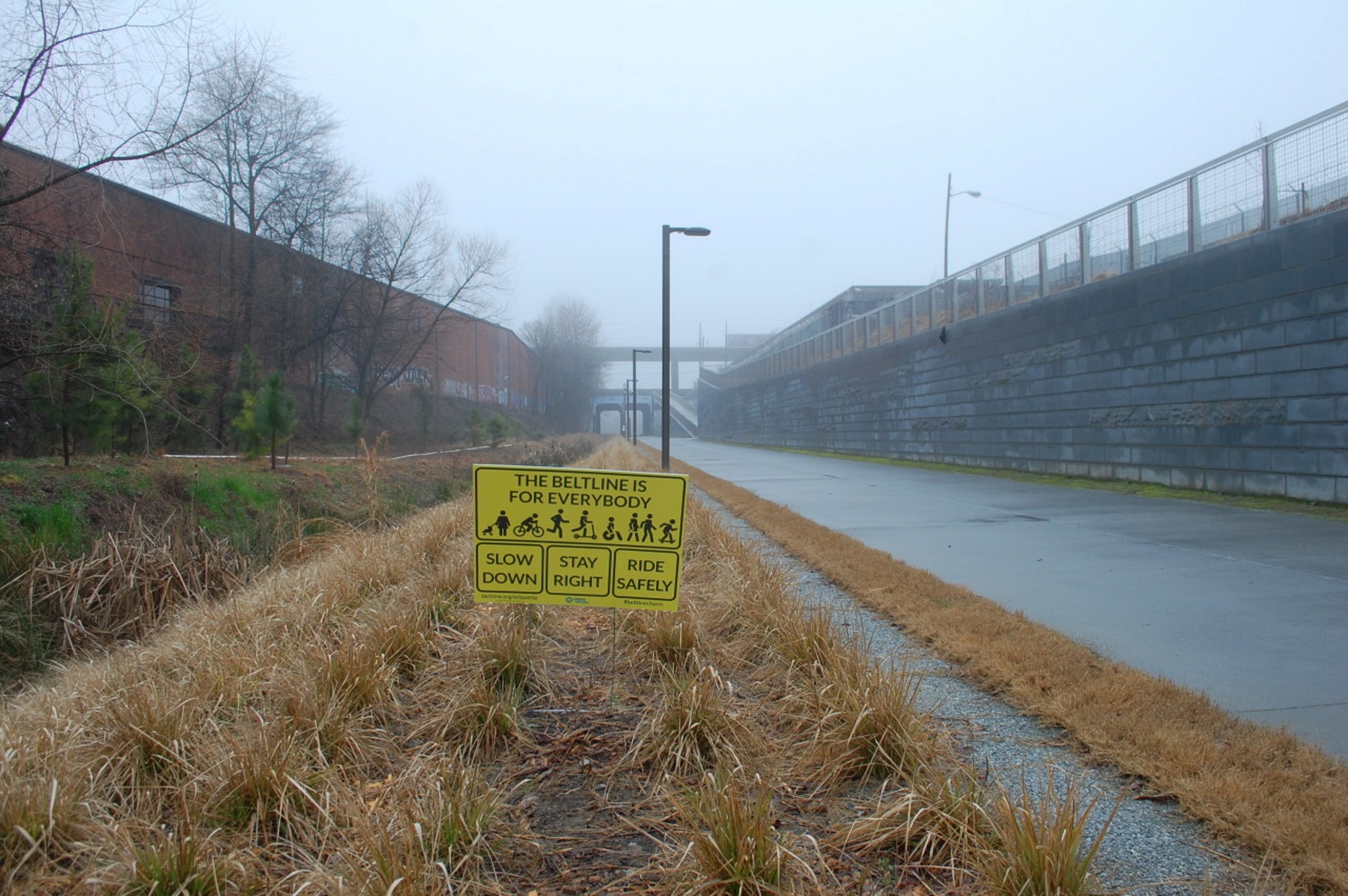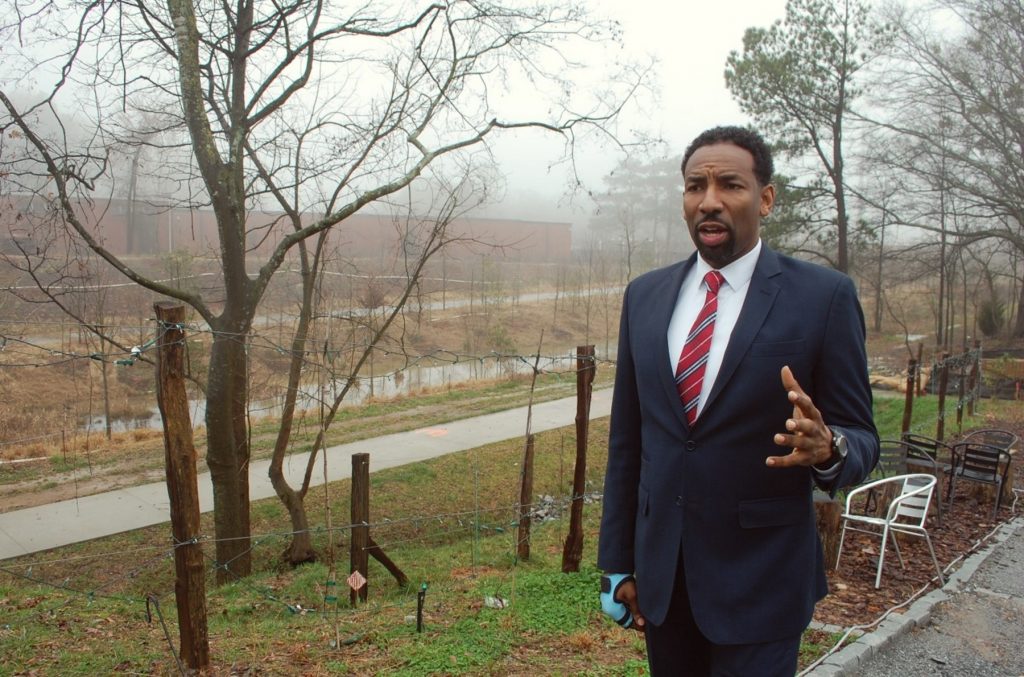A Year In, Atlanta’s Inclusionary Zoning Does Little For Affordable Housing

A year ago, Atlanta adopted a new rule requiring developers building along the BeltLine include low-cost units. But so far, it hasn’t done much for affordable housing in the city.
Stephannie Stokes / WABE
Andre Dickens stands along the BeltLine trail in Atlanta’s West End neighborhood and admires the incoming development.
Construction workers are converting a row of old warehouses into breweries and shops serving things like pickles and gelato.
“You see new stuff is coming in,” said Dickens, an at-large Atlanta City Council member. “This area is transforming. And it’s some needed change and revitalization.”
Neighborhoods, like this, around the BeltLine, are becoming some of the most desirable in the city.
Dickens said that’s why he pushed for a new rule, known as inclusionary zoning, for any development that happens around the trail.
It requires that even luxury apartment buildings keep a portion of their units affordable: either 10 percent at about $850 in rent for a one-bedroom or 15 percent at $1,100.
“So that the BeltLine won’t be 100 percent for the wealthy,” Dickens said. “You at least have, you know, 15 or so percent or more set aside for low-income individuals.”
That’s the idea.
But the city adopted the policy more than a year ago and, so far, it hasn’t done much for affordable housing in the city.

Inclusionary zoning is based on the assumption that developers will keep building, and since the rule went into effect, they haven’t. Just two projects have been approved around the entire trail.
Dickens wrote off the downturn as normal. Think of it as an adjustment period, he said.
“I don’t have any panic about year one. Year one is doing what it should do, which is give everybody an opportunity to get to steady state,” he said.
Some developers, though, see year one differently. They worry the construction slowdown may be more permanent.
To get at why, Tim Schrager of the high-end apartment developer Perennial Properties said you have to understand what it takes to finance any project.
“Development deals are very challenging. They’re complex. The cost of construction. The cost of land. The cost of materials,” Schrager said. “Everything is very expensive today.”
So, when developers have to tell investors that the project is going to bring in less revenue on 15 percent of the units for inclusionary zoning, they may face a dilemma.
“I don’t think that the electricians and the framers are going to start reducing the cost of their labor because of inclusionary zoning,” Schrager said. “The deal’s not going to pencil out.”
Meaning investors won’t fund the project.
Inclusionary zoning sets prices based the region’s median income — aiming at those who make 60 to 80 percent — which has increased only sluggishly as rental rates have soared.
The two developments that have moved forward rely either on government subsidies or philanthropic donations to provide affordable units.
If other builders without that extra support can’t pull off their development deals, then the city could end up with fewer units overall, Schrager said.
In a city growing by 10,000 people each year, he said that could exacerbate housing issues.
“It’s a risky bet that the city is making,” Schrager said, “because nobody disagrees that we need more supply.”
But Georgia State professor Dan Immergluck said if there is a supply issue, the policy is not to blame.
“The numbers do not support any notion that the inclusionary zoning has deterred development,” he said.
Immergluck, who backs the policy, compared apartment construction around the BeltLine to the rest of the city. He found it is declining — everywhere.
“Real estate markets go through cycles, and the city has seen over 30,000 apartments built in really about a five-year period,” he said. “So the cycle is just slowing.”
Even in prior years, Immergluck’s study showed there were only a handful of projects inside the inclusionary zone.
The exception is the year before the policy went into place when permits spiked to nine. Immergluck said that likely represents developers rushing to avoid the regulation.
In general, he said, most development has been concentrated in areas like Midtown that the rule doesn’t touch.
“If anything, the ordinance was weakened severely,” Immergluck said, by constraining it to the half-mile around the BeltLine.
He said if Atlanta wants to create more affordable housing, it should expand inclusionary zoning citywide.
And Immergluck said it should include for-sale units, too. As apartment construction has slowed, townhome building has picked up — with some houses around the BeltLine asking $1 million.

This disagreement over the impact of inclusionary zoning has played out around the country, as cities have turned to the policy to make up for rising rents.
Portland, Oregon, is also questioning whether it’s stifling construction, while New York has boasted thousands of low-cost units as a result of it. Meanwhile, Denver ditched its inclusionary zoning law in favor of forcing developers to pay into an affordable housing fund.
But in one way, the debate over the policy in Atlanta is especially precarious. The city is in Georgia, which has laws protecting landlords from city regulations.
To Steve Rothman, a land use attorney in Atlanta, the language in Georgia code is unambiguous. It states that cities can’t tell residential property owners what to charge for rent.
But Rothman said that’s exactly what inclusionary zoning does.
“I advise people that it’s clearly in violation of the words in the statute and that the city would have a hard time defending it,” he said.
He said it would probably take several years to litigate the issue, and, for now, developers aren’t interested in entering the legal fight.
Council member Andre Dickens said he doesn’t expect one.
He argued the city satisfied state law by offering developers perks, like expedited permitting and the ability to pay an opt-out fee.
Also, he said you have to consider the value of the BeltLine.
“You and I right now are standing on a billion dollars of public development,” Dickens said. “A developer comes here and they’re benefiting from this billion dollars’ worth of public investment.”
He said now city residents deserve something in return.








